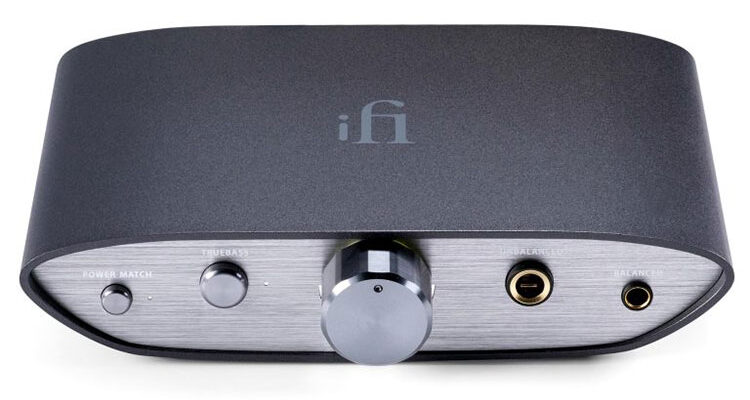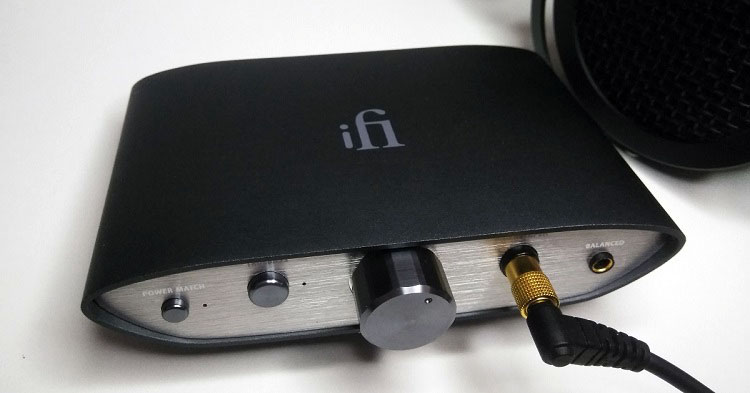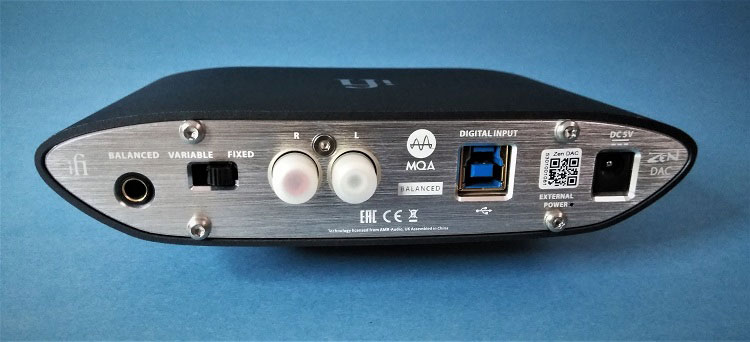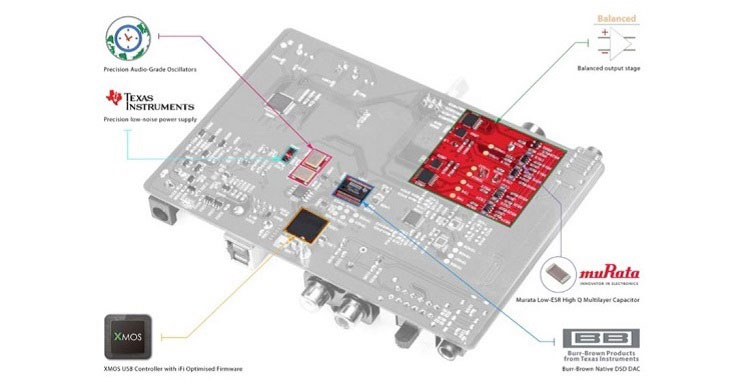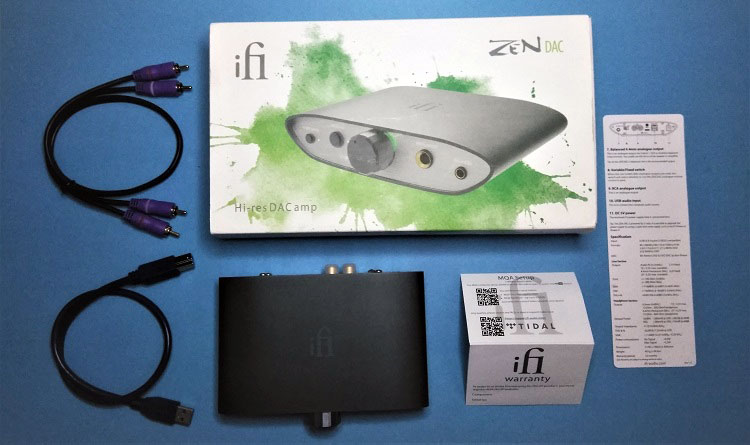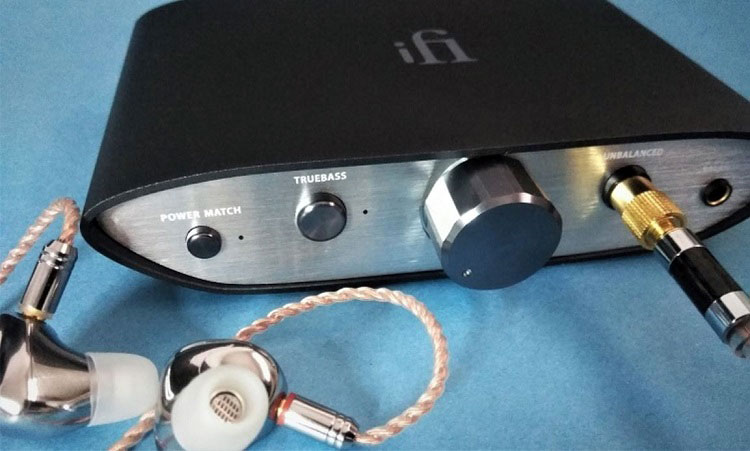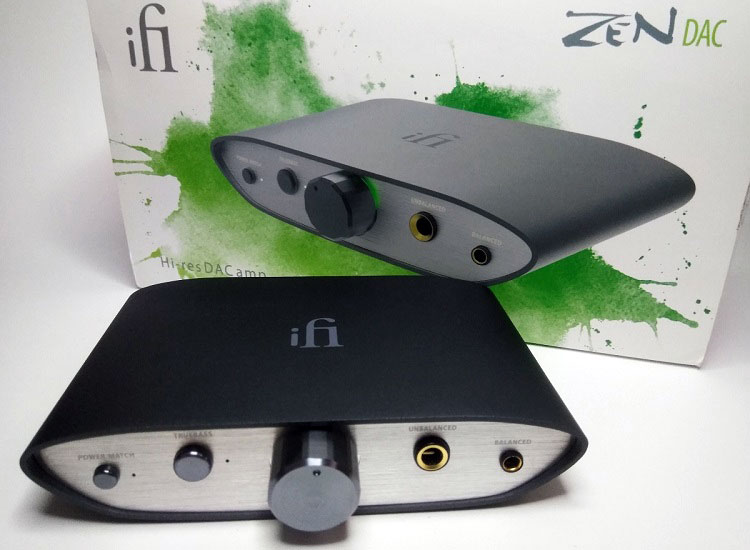The iFi Audio Zen DAC is an entry-level desktop integrated DAC and balanced headphone amplifier with MQA support. It is priced at $129.99.
Disclaimer: The iFi Audio Zen DAC sent to us for the purposes of this review is a sample and does not have to be returned. Thank you to iFi Audio for giving us this opportunity.
You can read more about iFi Audio products we reviewed on Headfonics by clicking here.
Note, this review follows our new scoring guidelines for 2020 which you can read up on here.
Roadmap
I’m pretty sure everyone has noticed a change with the audio equipment company iFi mostly with their design concepts. Recently it seems like iFi wants to abandon their old ways of making portable headphone amplifiers that resemble mini power inverters and implement a fancier and more conceptual design.
When the iFi Hip DAC was received, it did not look like the typical iFi DAC Amplifier because previously I could tell an iFi amp from afar but not this one. This one was different but none the less I liked not only its looks but the sound quality it had as well and I gave it a good rating and review.
Now we get the iFi Zen DAC Amplifier combo and again I think to myself that this unit is far from a common-looking iFi product. It has a different and unique shape and form. I think it’s obvious there’s been a turnaround somewhere within iFi and I like it.
Product Introduction
The iFi Zen is a USB only DAC headphone amplifier combo intended for desktop use. It has many of the features iFi DAC amps are known for but at a reduced price and with a different look from iFi’s past products.
The iFi Zen Dac’s main selling feature is the balanced headphone and line-level outputs and for a very low price.
Design
The two-tone rounded trapezoidal all-metal case of the iFi Zen DAC amp has a retro 60’s look to it. You could easily mistake it for a piece of retro audio equipment. The case itself is finished in a matte dark grey that resembles a gunmetal finish. The front and back panels are brushed aluminum.
The Zen DAC feels sturdy and is slightly heavy at a little over a pound. When I first held it in my hands I immediately said to myself this feels more expensive than the asking price of 129 USD at the time of this writing. It feels like a quality item.
The Front Panel
On the left side of the front panel, there are two buttons. One is for the Power Match feature and the other is for the TrueBass feature. LEDs indicate if the features are on or off. The metal knurled volume knob sits in the center and is very smooth to operate.
It’s an analog knob and there is the slightest channel imbalance but it’s only detectable with the most sensitive of IEMs and headphones and at extremely low volume levels and only at the very bottom of the volume control.
One issue I found was that there is no power switch and unlike the Hip DAC the Zen DAC’s volume knob does not shut the unit off. The volume control is backlit and the color of the light indicates what format is being decoded.
On the right side, you have a single-stage 6.35mm stereo headphone out. The other is a balanced 4.4mm Pentaconn headphone output.
The Rear Panel
The back end of the Zen DAC is pretty busy. On one end you have your line outputs. One is a Pentaconn 4.4mm line out capable of 6.2 volts of output. While the other outputs are RCA type left and right outputs. These are capable of a full 2.1 volts in fixed mode and 3.3 volts maximum on the variable side. This is higher than the common 1.8 volts and its a plus.
The two outputs have a switch in the center labeled fixed and variable. This switch either keeps the output voltages constant or variable with the use of the volume knob so it makes it possible to use the Zen DAC to control amplified speakers.
The other side of the rear panel has the USB input which can also power the Zen DAC by itself. But if you want more power or want to remove the power load of the computer’s USB port then there is the separate DC 5 volt plug and I do recommend using a power adapter.
I believe the plug is a standard 5.5mm female plug which is very common today so you shouldn’t have any problems getting a power adapter that works.
I recommend using the iFi’s iPower adapter which has plenty of clean, filtered, and regulated power for the Zen DAC or any piece of electronic equipment you have that needs a DC 5-volt to 12-volt source. It’s a little pricey but it’s worth it for the peace of mind knowing you’re supplying your DAC with clean constant power. Plus the unit is extremely versatile and useful.
Tech Inside
USB Input
Let’s start at the source. Precision Audio grade dual Oscillators with the AMR Global master timing are used in the Zen DAC. The AMR GMT system synchronizes the internal clocks and reduces Jitter on the USB 3.0 backward compatible port.
DAC
The digital to analog conversion is handled by a Burr-Brown DSD1793 chip. This Burr-Brown True Native chip is one commonly used by WiFi. This Burr Brown gives the Zen DAC separate DSD and PCM pathways and provides you with the slam of multi-bit or linearity on Delta Sigma.
Decoding
The Zen DAC is capable of PCM of up to 24 bit/384kHz. There’s also DSD256 from 2.8MHz to 12.4MHz. DXD is also available at up to 353/384kHz. The Zen Dac also has you covered with the MQA streaming code used by Tidal’s Master tier straight out of the box.
The Zen DAC handled everything I threw at it from FLAC files to tidal Master tier and I even threw some DSD files at it. All those files played flawlessly on the Zen DAC.
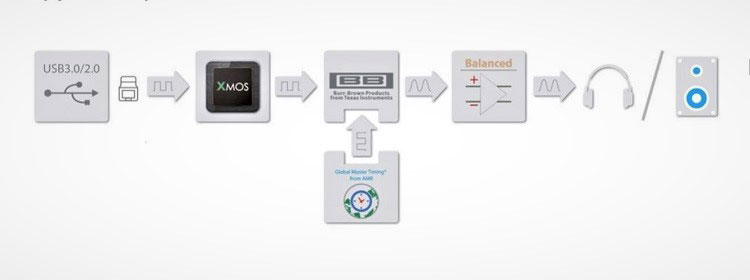
XMOS
The Zen DAC uses an XMOS chip with iFi’s custom firmware. It seems to be the same eight-core chip used in the Hip DAC. It’s a capable chip and handles everything on par with the Burr brown.
Dual Mono Dual Amplifier
Did you know iFi formed part of the original developer and designer team of the balanced headphone amplifier design? The balanced headphone output design was a joint venture of iFi and AMR led by Thorsten Loesch with input from John Curl.
The Zen DAC has not only two separate amplifier sections, one for single-ended and one for the balanced section but both are of a dual mono design. The balanced side also has a dual output stage on each channel.
I remember in my car audio installation feverish days there were car audio head units that had what was called a common ground system. All the speakers used the same wire for the ground. This is similar to the single-ended headphone output in which the ground wire is shared by the left and right channels.
These amps had inferior fidelity because their power was inadequate, circuit designers were limited and low power output was a common trait of the common ground car audio amplification system.
Then the higher power radios rolled out with 2 separate wires for each speaker. These amplifier designs have the same concept as the balanced output for headphones. It allows for more design flexibility and easier, better designs of headphone amp circuitry.
MuRata Capacitors
The amplifier output circuitry of the Zen DAC uses MuRata low ESR High Q multilayer surface mount capacitors. The Hip DAC had the same output stage but TDK caps were used instead. Perhaps these capacitors are responsible for the slight change in sound signature I hear when I compare the Zen with the Hip DAC even though they share almost the same components.
The Zen DAC also uses a Texas instruments precision low noise power supply chip that supplies clean power to the unit.
Features
GTO Filter
There is firmware available on iFi’s website which is a unified firmware that works on most iFi units including the Zen DAC. The 5.30c firmware has the GTO filter implemented which is the Gibbs Transient Optimized filter that tries to adjust latency to the natural response time of the ear.
I can give testimony that this filter does remove some of the rough edginess of the sound quality and gives the audio a smoother characteristic.
Balanced Outputs
The Zen DAC has a balanced 4.4mm Pentaconn headphone output with a maximum power output of 380mW at 50 ohms. The single-ended side supplied by the 6.35mm plug supplies a maximum power of 280mW at 32 ohms.
Distortion levels are given as 0.005% at 125mW with a signal to noise ratio of 112dba at 3.3 volts unbalanced or 6.2 volts balanced.
The 4.4 Pentaconn line output in the rear is capable of 6.2 volts maximum in variable mode. The RCA outs are capable of 3.3 volts max which is better than the common 1.8 volts. In fixed mode the voltages are reduced to 1 volt on the RCA side and 2 volts on the balanced connector.
Output impedance is given as 1 ohm on both the balanced and single-ended stage.
True bass
This feature is a different spin on iFi’s XBass. It reminds me of the now long lost loudness button that was a feature on most vintage receivers and integrated amplifiers. It’s an analog bass boost and it’s one of the best bass boost implementations I’ve heard besides the long lost loudness button.
However, there is a slight difference between the two and I did like the Xbass better because it tends to not overwhelm some of my headphones as much as the true bass did.
Power Match
I hear many others call this button a simple gain switch and it’s not just that. Of course, it controls gain but it also has an impedance match circuitry so there’s more to it. The power match is similar to iFi’s ieMatch products that reduce hiss and also increases dynamic range.
Packaging & Accessories
There is not a lot of stuff here. Just a few basic things to get you started beside the Zen DAC itself but that is fine. First off you get some RCA wires that are iFi branded. The length of the RCA wire is approximately 22 inches and of decent quality. Second, you get a USB-C type blue wire that’s about 20 inches in length. You also get an instruction pamphlet, a warranty card, and an MQA setup card. Those are all the items you get in the package which is fine with me.
My one of two gripes with the Zen DAC is in this area. The wires that iFi supplies their customers with are too short in length for desktop use unless your PC sits atop of your desk but most of us have the common under the desk.
So expect to have to get a longer wire if you have to reach down and under with the USB wire. However, if you use a laptop the shorter wire might be better for you.
Sound Impressions
Summary
When I reviewed the Hip DAC I got the perception of a forward and slightly aggressive audio presentation. It was tamed a bit by installing the GTO firmware but it still had an energetic presentation. Then it hit me. No wonder the Zen was chosen as a name. There is the conceptual design concept in action.
What is hip? It’s Young, vibrant, colorful, and energetic. A good way to be when you’re outside I think. That is what the Hip DAC is to me. It is even reflected in the color schemes used.
But what about when you’re at home and just want to relax? That’s where the Zen DAC comes in. The Zen has a warmer sound characteristic compared to the Hip DAC. Not that the Hip DAC has no warmth its just that the Zen DAC is warmer. Just the type of sound signature you need when you want to relax. A sound signature that is not harsh, too intense, offensive, or piercing.
I got this smooth perception of the Zen DAC with firmware 5.30 and more so on the 5.30C. The GTO filter seems to play well with the Zen DAC and makes it sound smoother. It’s hard for me to describe an amp’s sound characteristic because there are only very subtle differences to me but I’ll try my best as always.
Bass
The bass is neutral unless you turn on the Truebass feature on then it becomes somewhat bloomy but not boomy. It’s presented with a touch of warmth with good speed and a good definition.
Midrange & Treble
The midrange is softly reproduced by not being too forward. Again there is warmth in the midrange. I could hear a lot of detail and separation in vocals and instruments with good individual representation.
The high frequencies are just a touch laid back which completes the warm sounding amp section the Zen has. The highs are relaxed, smooth, and never overbearing or piercing.
Synergy
Efficiency
There is a touch of hissing present when you use very sensitive IEMs and you activate the high side of the power match feature. But you don’t need to do that and should use it on low for sensitive IEM’s because it has plenty of power. Other than that it sounds clean with a pretty dark background.
Pairings
I’ve used the Zen DAC mostly with my desktop computer but I bet it would work the same on any laptop with at least a USB 2.0 port. The headphones I’ve used with the Zen DAC are the Hifiman Sundara, Phillips SHP9500, Audiosense DT200, and the Kbear Tri I3. There are spoiler alerts here.
The 9500’s and the DT200 are 2 very efficient units and both work fine on low power match setting with power to spare. Both however sounded too busy in the high setting and Neither liked the Truebass feature and both were overwhelmed by it. The Sundara likes this amp on high power match with Truebass on. The Truebass fills the small void the Sundara has in the bass department.
The Tri I3 didn’t care and sounded fine at any setting but the Truebass was too overbearing on them.
Select Comparisons
iFi Hip DAC
The Hip Dac has almost the same components except for the muRata capacitors. It could be used as a desktop amplifier plus as a portable with the built-in battery. The Zen DAC is warmer in sound in just about every way. Midrange and high frequencies are a bit more forward on the Hip DAC compared to the Zen. The bass Boost sounds the same to me although iFi gives them both different names.
I don’t understand why the Zen DAC doesn’t have the same on/off feature the Hip DAC has. There’s no way of shutting off the Zen DAC. This to me is the worst aspect of the Zen DAC. The 6.35mm is replaced by the S balanced connector on the Hip DAC which I liked a lot but is not necessary for home use. The Hip DAC also has a bit more power but it also has a slightly higher noise floor.
FX Audio DAC-X6
I don’t have many other DAC amp combo units in my possession momentarily to compare to the Zen DAC but I have this cheap little gem. It has many features including 3 separate inputs consisting of USB, Optical, and SPDIF.
In stock form, this unit is not too good but you can’t expect much for 65 US dollars. I modified mine by moving the internal jumpers to high gain permanently. I also replaced the OPamp with a 4552 which gave it a warmer sound signature and with those two mods, it was transformed.
This unit is capable of a full watt of power at a 105db SN ratio at 16 ohms. However, the Zen DAC has a higher SN ratio of 115 and that’s a pretty big jump. You could tell in the dynamics which are better on the Zen DAC.
The USB port on the FX audio unit is pretty bad, to be honest, and this unit works best using the Optical or SPdif input. But contrary the Zen DAC’s USB input is without flaws. You could tell the DAC section inside the Zen DAC is better and it sounds cleaner and produces more detail.
The single-ended output side of the Zen DAC somehow seems almost as powerful as the FX unit. This teaches me that not all the time more power means better sound. There is no bass boost switch on the FX and honestly, I’m hooked on iFi’s Truebass or Xbass and the DAC-X6 is going in the closet for now.
Our Verdict
If the iFi Zen DAC had a watt of power or more this unit could easily be offered at $300 or more. It is a well built, sturdy unit with many well-known components that are used in their more expensive devices.
I like the retro design and the feature set too. I like the size plus it sounds great to boot. My only complaints are first off the short wires that come in the box but that could be remedied by just obtaining another wire which is no big deal. However, if your PC is on top of your desk or if you use a Laptop then the shorter wire might even be more beneficial.
The other con is the lack of a power button or a way to turn the unit off. You could always disconnect the Zen DAC if you don’t feel comfortable leaving it on all the time. I don’t think leaving the unit on 24 hours a day will be a problem though, affect the unit or run up a large energy bill because It does run cold to the touch all day long even with hours of heavy use. The unit does park itself and shuts off the power output stage if there is no input signal present.
One other good point the Zen DAC has is the dual balanced outputs at probably the best price on the market today. Setting small issues aside, the Zen DAC is a warm sounding and a well built DAC headphone amp combo with lots of features for the asking price and I give it a high recommendation.
iFi Audio Zen Dac Specifications
| Input | USB3.0 B Socket (USB2.0 compatible) |
| Formats |
|
| DAC | Bit-Perfect DSD & DXD DAC by Burr-Brown |
Line Section |
|
| Output | Audio RCA (SE) — 2.1V fixed 1V / 3.3V max. (variable)
4.4mm Pentaconn (BAL) — 4.2V fixed 2V / 6.2V max. (variable) |
| Zout | <= 200 Ohm (BAL) <= 100 Ohm (SE) |
| SNR | < -116dB(A) @ 0dBFS (BAL/SE) |
| DNR | > 116dB(A) @ -60dBFS (BAL/SE) |
| THD+N | < 0.0015% @ 0dBFS (BAL/SE) |
Headphone Section |
|
| Output Power (@1% THD) |
|
| Output Impedance | < 1 Ω (BAL/SE) |
| THD & N | < 0.005% (125mW @ 32R) |
| SNR | > 113dBA (6.2V BAL/3.3V SE) |
| Power consumption | < 1.5W via USB power OR 5v DC (power supply not included) |
| Dimensions | 117(l) x 100(w) x 30(h)mm |
| Weight | 0.8 kg (1.8 lbs) |

